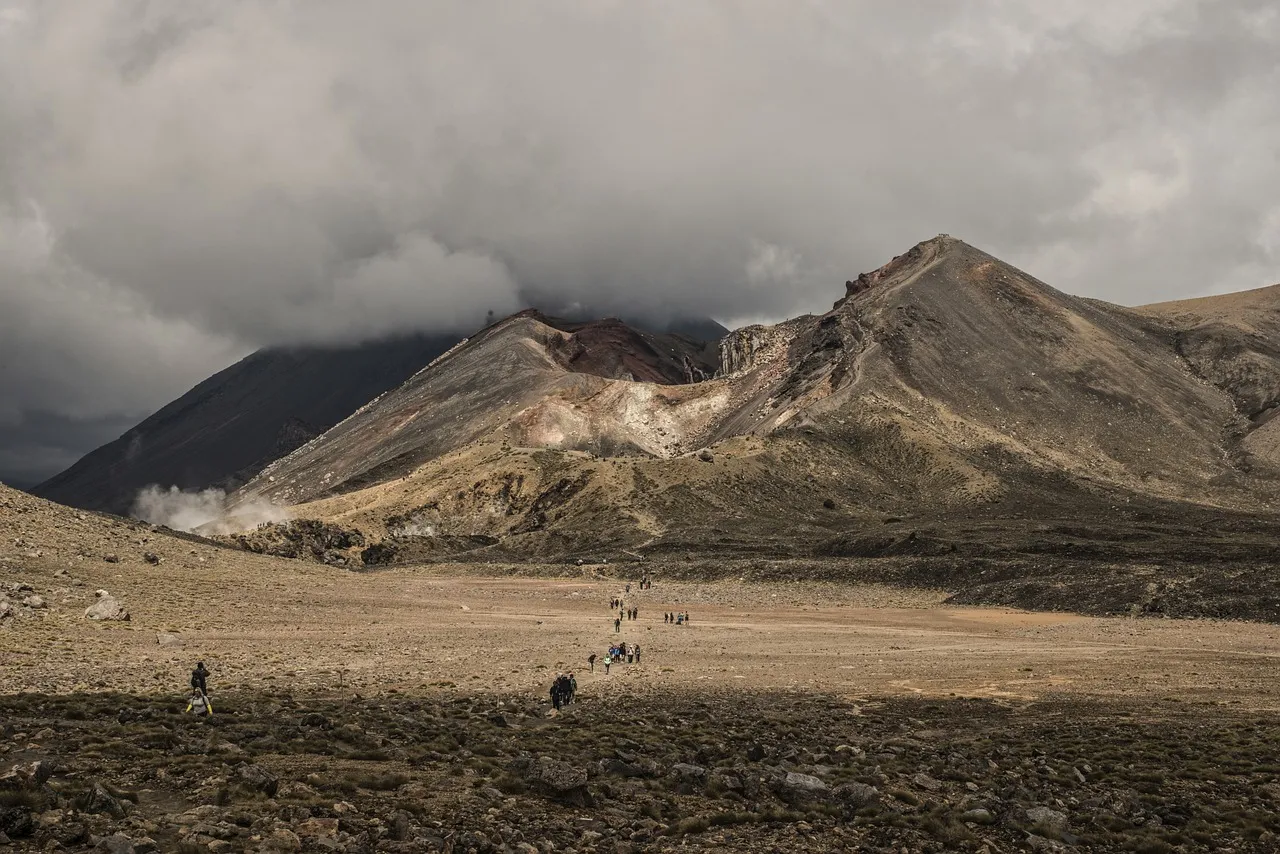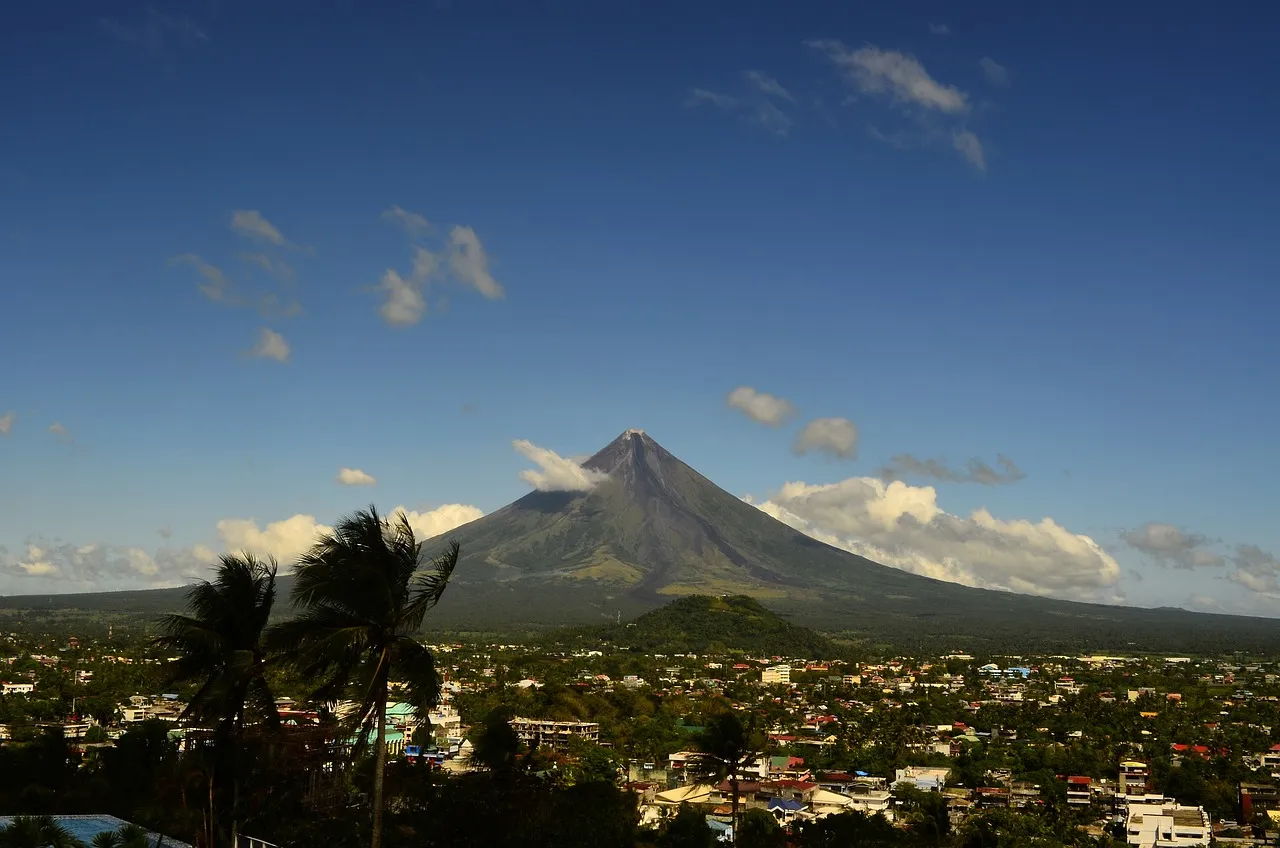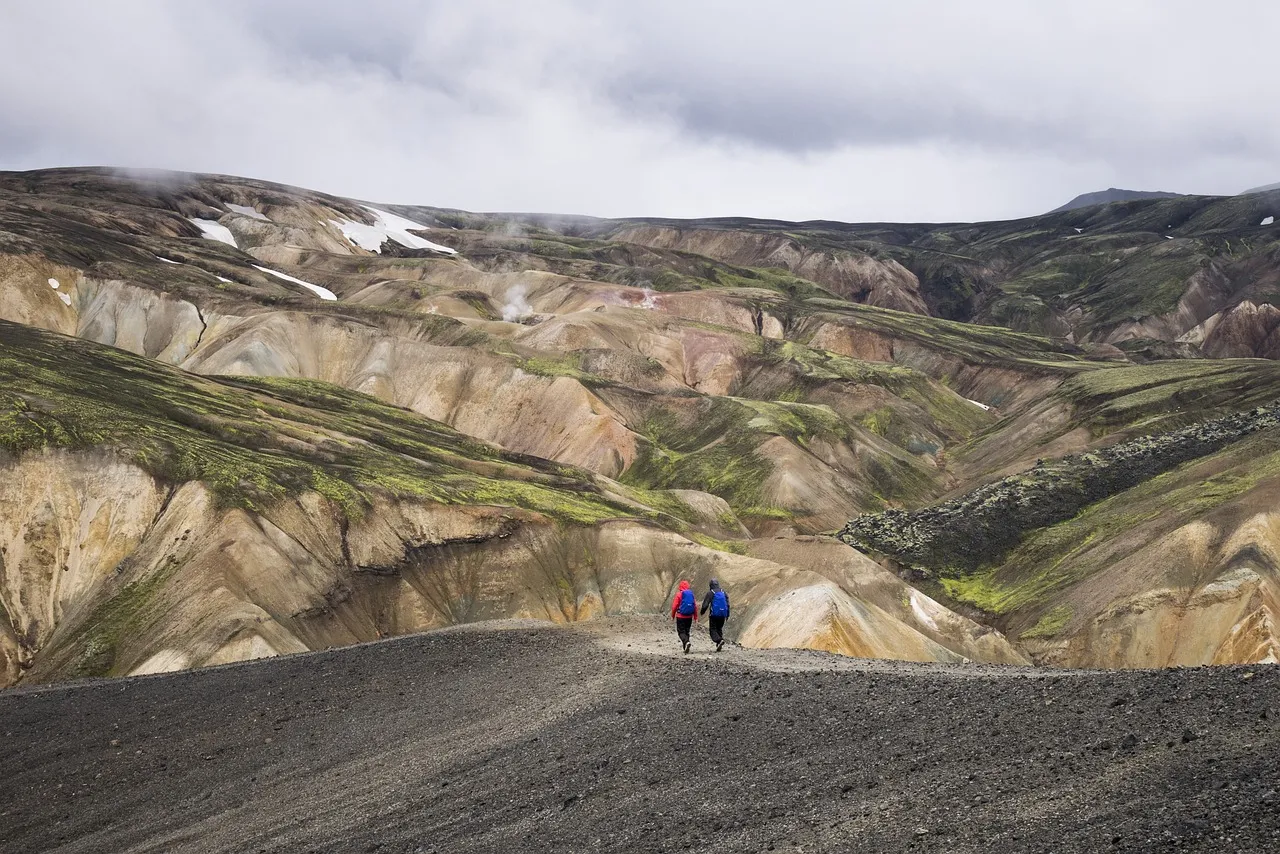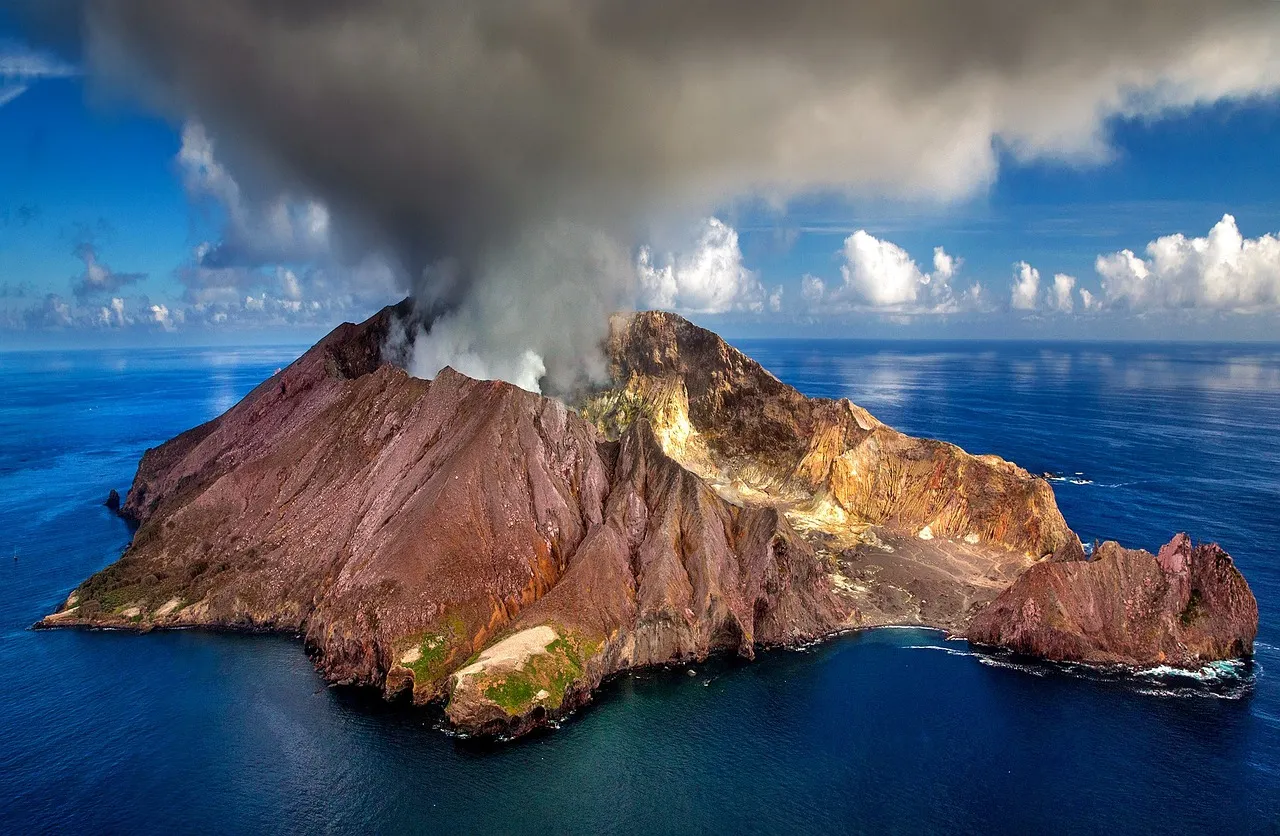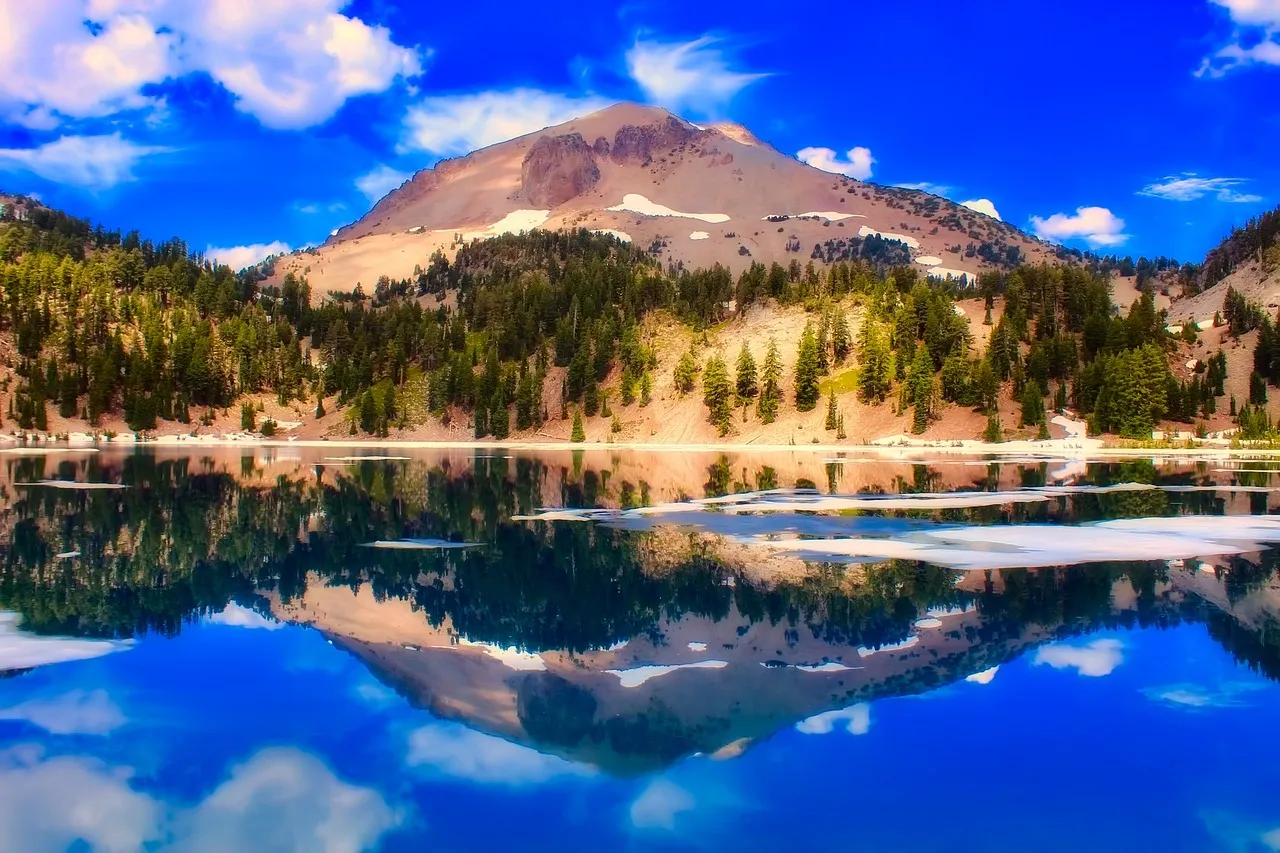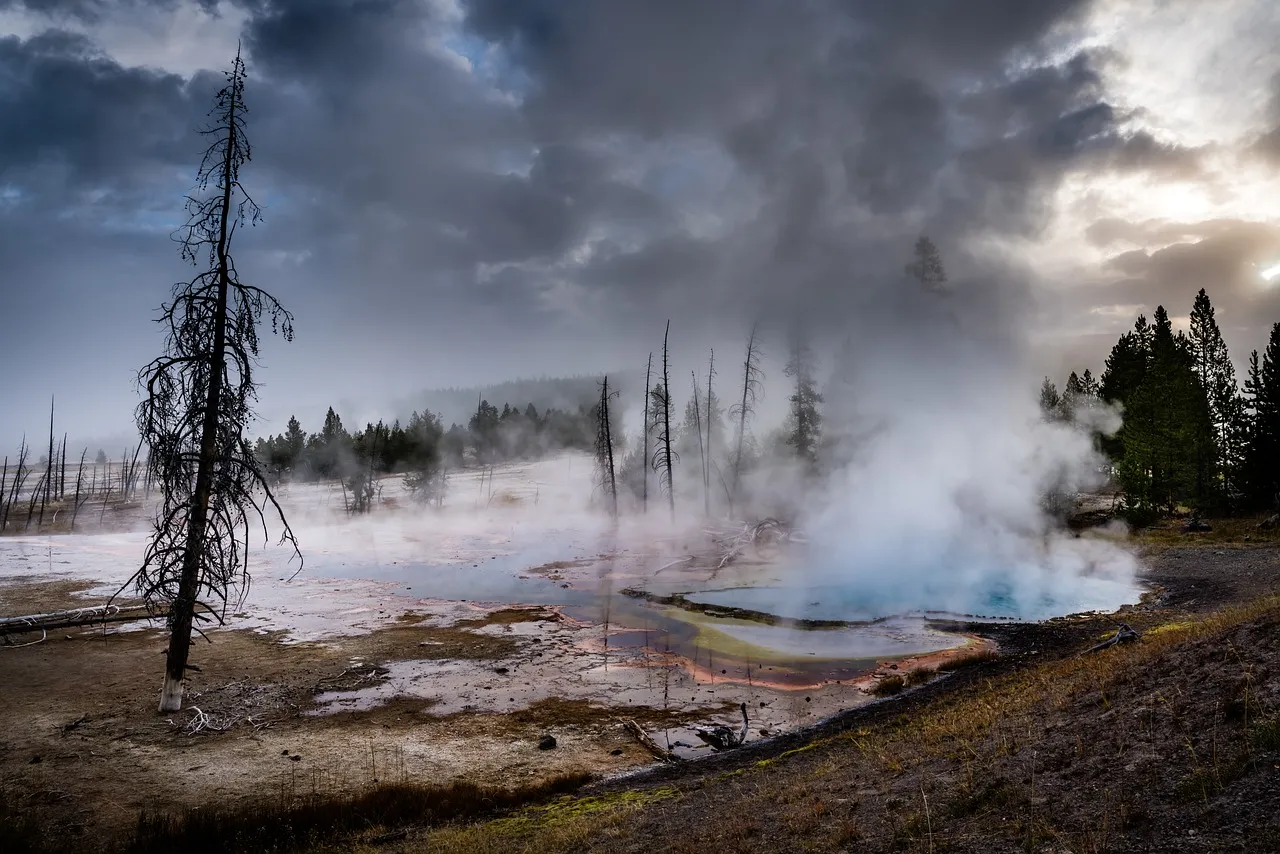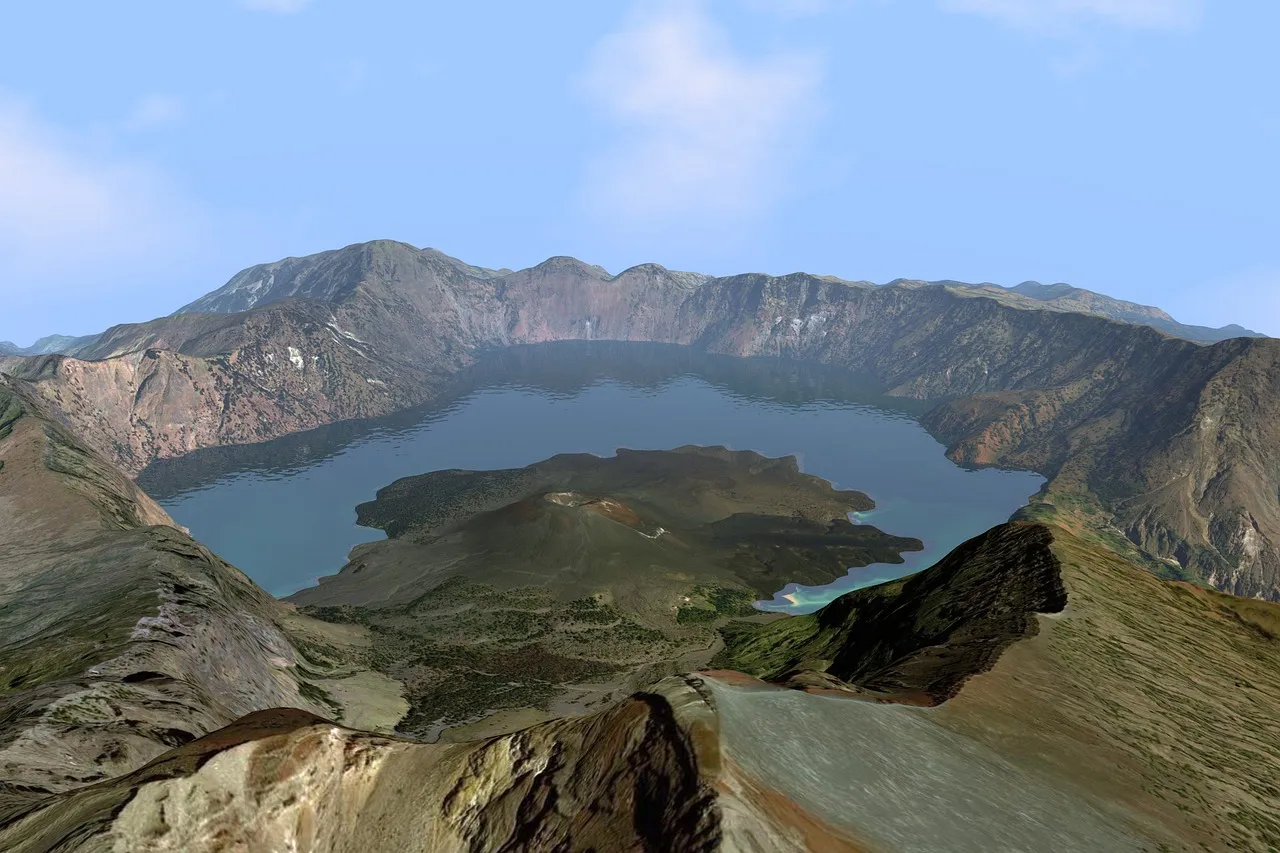The allure of volcanic landscapes lies in their dramatic beauty, raw power, and the intriguing blend of destruction and creation. Exploring these dynamic environments provides a unique opportunity to witness the Earth’s fiery forces at work. This guide takes you on a journey into volcanic landscapes exploration, uncovering some of the most awe-inspiring destinations that showcase the beauty and resilience born from the depths of the Earth.
Volcanic Landscapes Exploration
1. Iceland – Land of Fire and Ice
Iceland, often referred to as the “Land of Fire and Ice,” boasts a surreal landscape shaped by volcanic activity. The island is home to geysers, hot springs, and dramatic lava fields. Explore the otherworldly landscapes of the Krafla Caldera, witness the power of the Strokkur Geysir, and hike through the volcanic wonders of Landmannalaugar. Iceland’s volcanic beauty serves as a reminder of the Earth’s geological forces in action.
2. Hawaii – Pele’s Playground
The Hawaiian archipelago is a hotspot for volcanic activity, and exploring its diverse landscapes is a captivating journey into the heart of the Pacific Ring of Fire. Visit the Hawaii Volcanoes National Park on the Big Island to witness the active Kilauea and Mauna Loa volcanoes. Walk through the Thurston Lava Tube, marvel at the colorful craters, and witness the mesmerizing glow of molten lava as it meets the ocean. Hawaii’s volcanic landscapes tell a story of creation and destruction, shaped by the legendary goddess Pele.
3. Santorini, Greece – Caldera Wonders
In the Aegean Sea, Santorini stands as a breathtaking example of a volcanic caldera. Formed by a colossal volcanic eruption, the island’s cliffs reveal layers of history and unique geological formations. Explore the charming villages perched on the caldera rim, witness the iconic sunsets over the deep blue waters, and sail to the volcanic islets in the center of the caldera. Santorini’s volcanic beauty adds an extra layer of enchantment to this Cycladic gem.
4. Yellowstone National Park, USA – Geothermal Marvels
Nestled in the heart of the United States, Yellowstone National Park is a geothermal wonderland shaped by the forces beneath the Earth’s surface. Witness the mesmerizing eruptions of the Old Faithful geyser, explore the colorful Grand Prismatic Spring, and hike through the Norris Geyser Basin. Yellowstone showcases the raw power of volcanic activity, with boiling springs, bubbling mud pots, and geysers that punctuate the landscape with bursts of steam.
5. Mount Fuji, Japan – Iconic Volcanic Majesty
As Japan’s highest peak, Mount Fuji stands as an iconic symbol of the country’s volcanic history. The perfectly symmetrical volcano is revered in Japanese culture and attracts climbers and admirers alike. Explore the Fuji Five Lakes region, where the mountain’s reflection paints a serene picture. Visit the Chureito Pagoda for a postcard-worthy view, and consider ascending Mount Fuji for a firsthand experience of its majestic volcanic landscapes.
6. Rotorua, New Zealand – Maori Heartland of Geothermal Wonders
In the heart of New Zealand’s North Island, Rotorua is a geothermal playground where Maori culture intertwines with volcanic landscapes. Witness the bubbling mud pools and erupting geysers at Te Puia, immerse yourself in the healing waters of the Polynesian Spa, and experience the cultural richness of the Whakarewarewa Living Maori Village. Rotorua offers a unique blend of geothermal wonders and the living heritage of the Maori people.
7. Kamchatka Peninsula, Russia – Siberian Volcanic Wilderness
Far off the beaten path, the Kamchatka Peninsula in Russia is a remote wilderness defined by its volcanic activity. Home to a chain of active volcanoes, hot springs, and pristine landscapes, Kamchatka provides a haven for adventurous explorers. Hike to the summit of volcanoes like Klyuchevskaya Sopka, soak in the Valley of Geysers, and witness the untamed beauty of this Siberian volcanic wonderland.
8. Azores, Portugal – Atlantic Archipelago of Volcanic Beauty
The Azores, an archipelago in the middle of the Atlantic Ocean, offer a lesser-known yet captivating volcanic landscape. Explore the craters of Sete Cidades on Sao Miguel Island, marvel at the fumaroles of Furnas, and relax in the geothermal hot springs. The Azores showcase the resilience of nature as it transforms volcanic terrain into lush greenery and vibrant landscapes.
9. Mount St. Helens, USA – Icon of Volcanic Renewal
A symbol of resilience and renewal, Mount St. Helens in Washington State, USA, stands as a testament to the power of nature’s rebirth after catastrophic volcanic events. Explore the Johnston Ridge Observatory to learn about the 1980 eruption, hike through the blast zone, and witness the regrowth of life in the area. Mount St. Helens exemplifies the continuous cycle of destruction and renewal inherent in volcanic landscapes.
10. Arenal, Costa Rica – Majestic Volcano and Biodiversity Hub
In the heart of Costa Rica, Arenal Volcano reigns as a majestic centerpiece surrounded by lush rainforests and diverse ecosystems. Explore the Arenal Volcano National Park, hike through lava fields, and relax in hot springs with a view of the volcanic peak. Arenal’s beauty extends beyond its molten core, offering a rich tapestry of biodiversity that thrives in the shadow of this Central American giant.
Embarking on a journey into volcanic landscapes exploration is an invitation to witness the Earth’s dynamic forces at play. From the frozen majesty of Iceland to the tropical allure of Costa Rica, these destinations offer a glimpse into the ever-changing canvas shaped by the planet’s internal fire. As you embark on your volcanic adventure, remember that each eruption, lava flow, and geothermal wonder tells a story of creation, destruction, and the relentless power of nature.
Volcano hiking safety tips
Venturing into the heart of volcanic landscapes is a thrilling and awe-inspiring adventure. The allure of hiking up an active or dormant volcano captivates the spirit of adventurers seeking unique and dramatic landscapes. However, trekking on these fiery giants requires careful consideration and preparation. In this guide, we’ll delve into essential volcano hiking safety tips to ensure a memorable and secure journey to the summit.
1. Research and Choose Your Volcano Wisely
Before embarking on a volcano hike, thorough research is essential. Each volcano is unique, with varying levels of difficulty, altitude, and potential hazards. Choose a volcano that aligns with your hiking experience and fitness level. Be aware of any recent volcanic activity or eruptions, and always check for updated information from reliable sources.
2. Understand the Terrain and Trail Conditions
Volcano trails can present diverse terrains, including loose volcanic rocks, steep ascents, and challenging descents. Familiarize yourself with the trail conditions and terrain specifics. Some trails may involve traversing lava fields, while others lead through dense vegetation. Understanding the landscape aids in proper preparation and ensures a safer hiking experience.
3. Check Weather Conditions
Weather conditions on volcanoes can change rapidly, impacting visibility and safety. Monitor weather forecasts for the specific volcano you plan to hike, paying attention to factors like wind speed, precipitation, and temperature fluctuations. Unfavorable weather conditions may warrant rescheduling your hike to ensure a safer and more enjoyable experience.
4. Inform Others About Your Plans
Before setting out on a volcano hike, inform someone reliable about your plans. Share your intended route, estimated duration, and expected time of return. This precautionary measure ensures that someone is aware of your whereabouts and can initiate assistance if needed. Carry a communication device like a mobile phone or a two-way radio for emergencies.
5. Pack Essential Safety Gear
Prepare a backpack with essential safety gear, including a first aid kit, sufficient water, high-energy snacks, a map and compass, a flashlight or headlamp, and protective clothing. The volcanic terrain may expose you to sharp rocks and intense sun, so wearing sturdy hiking boots, long sleeves, and pants is advisable. Consider carrying a multi-tool for minor repairs and a whistle for signaling in emergencies.
6. Be Aware of Gas Emissions
Certain volcanoes release gases that can be hazardous to your health, including sulfur dioxide and hydrogen sulfide. Research the specific gas emissions of the volcano you plan to hike and carry a mask or a bandana to cover your nose and mouth if needed. Monitor wind direction to avoid walking into areas with high gas concentrations.
7. Follow Marked Trails
Stay on marked trails and designated paths to minimize the risk of accidents and environmental damage. Straying off established trails can lead to unstable terrain and increase the likelihood of encountering hazards. Many volcanoes have designated hiking routes to guide visitors safely to the summit.
8. Check for Recent Activity
Before heading out, check for recent volcanic activity reports from local authorities. Volcanoes can exhibit signs of unrest or even eruptive activity, and it’s crucial to stay informed. If there have been recent eruptions or increased seismic activity, consider postponing your hike until conditions are deemed safe.
9. Respect Restricted Areas
Some areas around volcanoes may be restricted due to safety concerns or ongoing research. Respect any marked boundaries and adhere to warnings from park rangers or authorities. These restrictions are in place to protect both visitors and the fragile ecosystems surrounding the volcano.
10. Hike with a Guide if Necessary
If you’re unfamiliar with volcano hiking or the specific volcano you’re tackling, consider hiring a knowledgeable guide. Experienced guides are well-versed in the terrain, safety measures, and emergency procedures. Their expertise can enhance your overall hiking experience and provide an extra layer of security.
11. Stay Hydrated and Pace Yourself
Hiking on volcanic terrain can be physically demanding, and high altitudes may contribute to dehydration. Carry an ample water supply and drink regularly to stay hydrated. Pace yourself to avoid exhaustion, especially during steep ascents. Allow time for acclimatization if the volcano reaches significant elevations.
12. Practice Leave No Trace Principles
Respect the environment by practicing Leave No Trace principles. Dispose of waste properly, stay on designated trails, and avoid disturbing wildlife. Volcanic landscapes are often fragile, and minimizing your impact helps preserve these natural wonders for future generations.
Embarking on a volcano hiking adventure is a thrilling and rewarding experience, but it comes with its unique set of challenges. By prioritizing safety, conducting thorough research, and being well-prepared, you can turn your volcano hike into a memorable and secure journey. Respect the power of these geological wonders, follow safety guidelines, and revel in the breathtaking landscapes that only volcanoes can offer.
Active volcanoes to visit
For adventurers seeking a journey into the heart of the Earth’s dynamic forces, visiting active volcanoes provides a thrilling and awe-inspiring experience. From the molten rivers of Hawaii to the smoking peaks of Indonesia, the world is dotted with these fiery giants that showcase the planet’s raw power. In this guide, we’ll explore some of the most captivating active volcanoes to visit, where fire and fury converge to create landscapes of unparalleled beauty.
1. Kilauea, Hawaii, USA – The Eternal Flame of the Pacific
Nestled within Hawaii Volcanoes National Park, Kilauea is one of the most active and accessible volcanoes on Earth. Witness the mesmerizing glow of lava flows, explore the otherworldly Thurston Lava Tube, and hike through the barren landscapes of the Kilauea Iki Trail. The ongoing volcanic activity creates an ever-changing canvas, making Kilauea a must-visit for those seeking the magic of molten lava in a tropical paradise.
2. Mount Etna, Sicily, Italy – Europe’s Tallest and Most Active Volcano
In the heart of the Mediterranean, Mount Etna looms over the island of Sicily, showcasing the dynamic beauty of volcanic activity. As Europe’s tallest and most active volcano, Etna offers a dramatic landscape of smoking craters, ancient lava flows, and fertile vineyards. Take a cable car and a 4×4 vehicle to reach the summit, where panoramic views of the surrounding landscapes and the Ionian Sea await.
3. Arenal, Costa Rica – The Crown Jewel of Costa Rican Volcanoes
Arenal Volcano, surrounded by lush rainforests, is a symbol of Costa Rica’s natural beauty and biodiversity. While Arenal is considered dormant, its perfectly conical shape and historical eruptions make it a captivating destination. Hike through Arenal Volcano National Park, relax in natural hot springs with views of the volcano, and explore the vibrant ecosystems that thrive in the shadow of this Central American giant.
4. Pacaya, Guatemala – A Walk on Lava Fields
Just a short drive from Guatemala City, Pacaya is an active complex volcano that offers a unique opportunity to walk on lava fields and witness volcanic activity up close. Guided tours take visitors on hikes to the summit, where steaming vents and lava flows provide a glimpse into the Earth’s inner workings. The breathtaking views of neighboring volcanoes and Lake Amatitlán add to the allure of this Guatemalan gem.
5. Sakurajima, Japan – The Active Volcano of Cherry Blossoms
Located in Kagoshima Bay, Sakurajima is an active volcano that adds an extra layer of drama to the scenic landscapes of southern Japan. Known for its frequent eruptions, Sakurajima is accessible by ferry and showcases stunning views of cherry blossoms against the backdrop of volcanic activity. Visit the Arimura Lava Observatory to witness the volcanic beauty while taking in the iconic cherry blossoms in spring.
6. Villarrica, Chile – The Beacon of the Lake District
Standing tall in Chile’s Lake District, Villarrica is one of South America’s most active volcanoes. The ascent to its summit promises panoramic views of the surrounding lakes and the Andes. Villarrica is unique for its persistent lava lake within the crater, creating a mesmerizing spectacle for those daring enough to climb. Adventure seekers can opt for guided hikes, often followed by an exhilarating descent on a sled.
7. Mount St. Helens, USA – A Tale of Destruction and Renewal
Mount St. Helens in Washington State, USA, is a living testament to the power of volcanic forces. The volcano’s 1980 eruption drastically altered the landscape, creating a crater and reshaping the surrounding terrain. Today, visitors can explore the Johnston Ridge Observatory to learn about the eruption, hike through the blast zone, and witness the regrowth of life in this dynamic and evolving ecosystem.
8. Pitón de la Fournaise, Réunion Island – The “Peak of the Furnace”
On the French overseas territory of Réunion Island in the Indian Ocean lies Pitón de la Fournaise, one of the world’s most active shield volcanoes. The relatively frequent but mostly non-explosive eruptions create surreal landscapes of hardened lava flows. Hike to the crater’s edge and marvel at the contrast between the lush green surroundings and the black, lunar-like surface shaped by recent eruptions.
9. Whakaari / White Island, New Zealand – Marine Volcanic Wonderland
An active marine volcano located in New Zealand’s Bay of Plenty, Whakaari, also known as White Island, offers a unique blend of terrestrial and underwater volcanic activity. Guided boat tours and helicopter flights provide access to the island, where visitors can explore the steaming vents, vibrant mineral deposits, and the marine-rich waters surrounding this active volcanic wonder.
10. Pacuare Volcano, Costa Rica – Remote and Untouched
For those seeking a more remote and untouched volcanic experience, Pacuare Volcano in Costa Rica beckons. Located in the Talamanca Range, Pacuare is part of a protected biological corridor. Hike through pristine rainforests, traverse hanging bridges, and witness the diverse flora and fauna that thrive in this secluded volcanic paradise.
Exploring active volcanoes is a thrilling and humbling experience that brings us face to face with the Earth’s fiery forces. From the smoldering peaks of Hawaii to the iconic landscapes of Italy and Japan, these volcanic destinations offer a unique blend of danger and beauty. As you embark on these fiery adventures, always prioritize safety, stay informed about local conditions, and revel in the unparalleled beauty that only active volcanoes can provide.
Volcanic national parks
Nature’s fiery spectacles are on full display in volcanic national parks, where the Earth’s raw power shapes landscapes of unparalleled beauty. These national parks offer a unique blend of danger and wonder, inviting adventurers to witness the forces that sculpt our planet. In this guide, we’ll embark on a journey to explore some of the world’s most captivating volcanic national parks, where fire and fury converge to create geological wonders.
1. Hawai’i Volcanoes National Park, USA – The Molten Heart of the Pacific
Nestled on the Big Island of Hawai’i, this national park is a mesmerizing showcase of volcanic activity. Home to the active Kilauea and Mauna Loa volcanoes, Hawai’i Volcanoes National Park invites visitors to witness molten lava flows, explore ancient petroglyphs, and hike through otherworldly landscapes. The Thurston Lava Tube and the Chain of Craters Road offer immersive experiences in the heart of the Pacific Ring of Fire.
2. Yellowstone National Park, USA – Geothermal Wonderland and Supervolcano
Renowned for its geothermal wonders, Yellowstone National Park in the United States harbors the iconic supervolcano beneath its surface. Explore the Old Faithful geyser, marvel at the colorful Grand Prismatic Spring, and witness the vibrant geothermal features scattered throughout the park. Yellowstone’s unique combination of geysers, hot springs, and explosive past eruptions make it a captivating destination for those seeking volcanic landscapes.
3. Tongariro National Park, New Zealand – Mordor’s Fiery Realms
Stepping onto the diverse landscapes of Tongariro National Park in New Zealand feels like entering the fictional realm of Mordor. The park, a UNESCO World Heritage site, is dominated by three active volcanoes: Tongariro, Ngauruhoe, and Ruapehu. The Tongariro Alpine Crossing, considered one of the world’s best day hikes, provides breathtaking views of volcanic craters, emerald lakes, and lunar-like terrains.
4. Aso-Kuju National Park, Japan – Volcanic Majesty in Kyushu
Situated in Kyushu, Japan, Aso-Kuju National Park is home to the active Aso Caldera, one of the world’s largest calderas. The park showcases volcanic peaks, mesmerizing crater lakes, and the iconic Aso-san, a volcanic complex with a vast grassy caldera floor. Explore the Kuju Mountains, where hiking trails offer panoramic views of the volcanic landscapes and an opportunity to witness the fury of Mount Aso’s eruptions.
5. Vatnajökull National Park, Iceland – Glacial Volcanism in the Arctic Circle
Encompassing Europe’s largest national park, Vatnajökull in Iceland is a haven of glacial beauty and volcanic activity. Vatnajökull Glacier, an otherworldly expanse of ice, conceals numerous active volcanoes beneath its surface. The park offers a surreal landscape where ice caves, glacial lagoons, and volcanic peaks coexist, creating an enchanting interplay between fire and ice.
6. Krafla Caldera, Iceland – The Hotbed of Icelandic Geothermal Activity
Within the Myvatn region of Iceland lies the Krafla Caldera, a hotbed of geothermal wonders and volcanic landscapes. Explore the Víti crater, where a turquoise geothermal lake awaits, and witness the fissure eruptions of Krafla’s recent volcanic history. The nearby Myvatn Nature Baths provide a relaxing contrast to the dynamic forces at play in this Icelandic national park.
7. Pacaya, Guatemala – A Volcanic Playground in Central America
Pacaya, located just south of Guatemala City, is part of the Pacaya-San Vicente volcanic complex. The national park offers a captivating mix of lush forests, volcanic craters, and breathtaking views of the surrounding landscapes. Guided hikes to the summit provide an opportunity to witness smoking vents, lava flows, and the raw beauty of this Central American volcanic playground.
8. Jeju Volcanic Island and Lava Tubes, South Korea – UNESCO Gem in the Korean Strait
Designated as a UNESCO World Heritage site, Jeju Volcanic Island and Lava Tubes in South Korea showcase the volcanic origins of Jeju Island. Explore the intricate Manjanggul Cave, hike up the iconic Seongsan Ilchulbong Peak, and marvel at the volcanic craters and unique geological formations that define this island national park in the Korean Strait.
9. Pacuare Reserve, Costa Rica – Remote Volcanic Wilderness
Tucked away in the Talamanca Range, Pacuare Reserve in Costa Rica offers a pristine and remote volcanic wilderness. This national park boasts lush rainforests, cascading waterfalls, and the towering Pacuare Volcano. Hike through untouched landscapes, discover hidden hot springs, and immerse yourself in the biodiversity that thrives in the shadow of this Central American volcanic gem.
10. Pitons Management Area, Saint Lucia – Twin Volcanic Peaks in the Caribbean
In the Eastern Caribbean, the Pitons Management Area in Saint Lucia features two towering volcanic peaks, Gros Piton and Petit Piton. The lush landscapes surrounding these iconic peaks provide a stunning backdrop to the volcanic spires. Hike through the verdant rainforest to witness panoramic views of the Caribbean Sea and the unique geological formations shaped by volcanic activity.
Volcanic national parks offer a thrilling glimpse into the forces that shape our planet. From the lava flows of Hawaii to the glacial wonders of Iceland, these national parks showcase the diverse and dynamic beauty of volcanic landscapes. As you embark on your journey, marvel at the raw power of nature and appreciate the delicate balance between creation and destruction that defines these fiery wonders.
Geothermal wonders worldwide
The Earth is a living, breathing entity, and nowhere is this more evident than in the geothermal wonders that dot our planet. From bubbling hot springs to explosive geysers, these natural manifestations of underground heat captivate and inspire. In this guide, we’ll embark on a global journey to explore some of the most mesmerizing geothermal wonders worldwide, where the Earth’s hidden furnaces come to life.
1. Yellowstone National Park, USA – The Geothermal Marvels of the American West
Yellowstone National Park in the United States is a geothermal wonderland, home to a stunning array of hot springs, geysers, and bubbling mud pots. The iconic Old Faithful geyser, with its predictable eruptions, draws visitors from around the world. The park’s geothermal features, such as the Grand Prismatic Spring and Norris Geyser Basin, create a surreal landscape that showcases the Earth’s inner heat.
2. Rotorua, New Zealand – Maori Culture and Geothermal Riches
Nestled on New Zealand’s North Island, Rotorua is not only a hub for Maori culture but also a treasure trove of geothermal wonders. Explore the Whakarewarewa Thermal Village, where residents live among geothermal features, and witness the Pohutu Geyser shoot plumes of steam into the air. The Champagne Pool and the Wai-O-Tapu Thermal Wonderland offer vibrant displays of color amidst the geothermal activity.
3. Geysir, Iceland – The Birthplace of Geysers
Iceland, a land forged by fire and ice, is home to the Geysir Geothermal Area, where the term “geyser” originated. While the Great Geysir itself is less active, its neighbor, Strokkur, erupts regularly, shooting boiling water up to 30 meters into the air. The surrounding geothermal features, including fumaroles and bubbling hot springs, create a captivating spectacle against Iceland’s dramatic landscapes.
4. Hells Gate, New Zealand – A Geothermal Reserve of Boiling Pools
Hells Gate, located near Rotorua in New Zealand, is a geothermal reserve renowned for its steaming fumaroles and boiling mud pools. The reserve is rich in Maori history and offers visitors a chance to experience the healing properties of geothermal mud in the Mud Bath and Sulphur Spa. The Kakahi Falls and the Inferno Crater showcase the raw power of Earth’s geothermal forces.
5. Wai-O-Tapu, New Zealand – The Thermal Wonderland of Colors
Known as the “Thermal Wonderland,” Wai-O-Tapu in New Zealand is a geothermal area famous for its vibrant and surreal landscapes. The Champagne Pool, with its orange-rimmed turquoise waters, is a highlight. The Artist’s Palette, Devil’s Bath, and the Lady Knox Geyser add to the kaleidoscope of colors that make Wai-O-Tapu a must-visit for geothermal enthusiasts.
6. El Tatio, Chile – Geyser Field in the Andes
Situated in the high-altitude Atacama Desert of Chile, El Tatio is one of the highest geyser fields in the world. Visitors can witness an awe-inspiring sunrise as the geysers erupt in the cold morning air. The juxtaposition of the geothermal activity against the Andean backdrop creates a surreal and unforgettable experience.
7. Lassen Volcanic National Park, USA – California’s Geothermal Gem
California’s Lassen Volcanic National Park is a hidden geothermal gem with a diverse range of hydrothermal features. Bumpass Hell, an active geothermal basin, boasts boiling springs, fumaroles, and mud pots. The park’s geothermal wonders are set against the backdrop of the Cascade Range, creating a unique blend of volcanic landscapes and thermal activity.
8. Beppu, Japan – The Onsen Capital of the World
Located on the island of Kyushu, Beppu in Japan is renowned as the onsen (hot spring) capital of the world. The city’s geothermal activity results in numerous hot springs, mud baths, and steam vents. The “Hells of Beppu,” a collection of unique hot springs with colorful names like Umi Jigoku (Sea Hell) and Blood Pond Hell, showcase the diversity of Beppu’s geothermal wonders.
9. Pamukkale, Turkey – Terraces of Thermal Pools
Pamukkale, meaning “cotton castle” in Turkish, is a UNESCO World Heritage site that features terraces of white, mineral-rich thermal pools. The hot springs have created stunning calcium deposits over time, forming cascading terraces that attract visitors seeking both relaxation and natural beauty. The ancient city of Hierapolis, with its well-preserved ruins, adds historical significance to this geothermal wonder.
10. Rotorua, New Zealand – Te Puia and the Pohutu Geyser
Te Puia, another geothermal marvel in Rotorua, New Zealand, is home to the iconic Pohutu Geyser. As the largest active geyser in the Southern Hemisphere, Pohutu erupts regularly, reaching impressive heights. Te Puia also offers a cultural experience, with a focus on Maori traditions and arts, creating a unique blend of geothermal wonders and indigenous heritage.
Geothermal wonders worldwide provide a fascinating window into the Earth’s inner workings, showcasing the dynamic forces that shape our planet. From the explosive geysers of Iceland to the colorful hot springs of New Zealand, these destinations offer a chance to witness the raw power and beauty of Earth’s hidden furnaces. As you embark on your global geothermal journey, remember to marvel at the forces beneath your feet and appreciate the delicate balance that sustains these natural wonders.
Exploring volcanic craters
Volcanic craters, with their mysterious allure and dramatic landscapes, are nature’s way of showcasing the Earth’s turbulent history. From the remnants of explosive eruptions to serene calderas surrounded by lush greenery, each crater tells a unique story. In this exploration, we’ll embark on a captivating journey into the enigmatic world of volcanic craters, uncovering the geological wonders that lie within.
1. Crater Lake, USA – The Deep Blue Jewel of Oregon
Nestled within the caldera of Mount Mazama in Oregon, Crater Lake is a stunning example of nature’s artistry. Formed over 7,000 years ago after a massive volcanic eruption, the lake now fills the collapsed caldera, creating the deepest lake in the United States. The vibrant blue waters, framed by sheer cliffs, make Crater Lake a breathtaking destination. Visitors can drive along the Rim Road, stopping at viewpoints like Watchman Overlook to marvel at the expansive views.
2. Santorini, Greece – Caldera Beauty Amidst the Aegean Sea
Santorini, a jewel in the Aegean Sea, is an archipelago formed by a series of volcanic eruptions. The caldera, now partially submerged, creates a dramatic and picturesque setting. Visitors to Oia and Fira can enjoy panoramic views of the submerged crater, dotted with charming white-washed buildings against the backdrop of the deep blue sea. Sunset viewpoints, such as Oia’s Castle, offer a front-row seat to the caldera’s breathtaking beauty.
3. Haleakalā Crater, USA – Maui’s Celestial Summit
Perched atop the island of Maui in Hawaii, Haleakalā Crater is a colossal volcanic depression formed through erosion and volcanic activity. The dormant shield volcano provides a surreal landscape, often compared to the surface of the moon. Visitors can witness the sunrise from the summit, where the play of colors across the crater creates a celestial experience. Hiking trails like the Sliding Sands Trail lead adventurers into the heart of this otherworldly terrain.
4. Ngorongoro Crater, Tanzania – Africa’s Natural Eden
Ngorongoro Crater in Tanzania is a UNESCO World Heritage site and an ecological wonder. Formed from the collapse of a massive volcano, the crater is now a self-contained ecosystem, home to a diverse array of wildlife. Visitors can embark on safari adventures to witness the “Big Five” – lions, elephants, buffalo, rhinoceros, and leopards – within the confines of the crater’s natural amphitheater.
5. Ijen Crater, Indonesia – The Blue Flames of East Java
Located in East Java, Indonesia, the Ijen Crater is known for its mesmerizing blue flames, created by ignited sulfuric gases. The acidic crater lake adds to the surreal landscape, surrounded by volcanic slopes and dense foliage. Adventurous travelers can embark on a challenging trek to witness the ethereal blue flames during the night, creating a unique and unforgettable experience.
6. Taupo Caldera, New Zealand – The Volcanic Heart of the North Island
The Taupo Caldera in New Zealand is a massive depression formed by several explosive eruptions. Lake Taupo, nestled within the caldera, is the country’s largest lake. The Craters of the Moon geothermal area, with its steaming vents and bubbling mud pools, offers a glimpse into the geothermal activity that still echoes the violent past of this volcanic region.
7. Mount Vesuvius Crater, Italy – The Legendary Volcano of Pompeii
Mount Vesuvius, overlooking the Bay of Naples in Italy, is infamous for its catastrophic eruption in 79 AD that buried the city of Pompeii. The crater, now dormant, provides breathtaking views of the surrounding landscapes and the Bay of Naples. Guided hikes to the summit offer an opportunity to peer into the depths of this legendary volcano while appreciating its historical significance.
8. Hverfjall, Iceland – A Perfectly Preserved Tephra Ring
Hverfjall, also known as Hverfell, is a volcanic crater located in northern Iceland. Formed around 2,500 years ago, the perfectly preserved tephra ring provides a stark contrast to the surrounding landscapes. The hiking trail to the summit offers panoramic views of Lake Mývatn and the volcanic landscapes that define this region.
9. Poás Volcano Crater, Costa Rica – Turquoise Waters and Steaming Vents
Poás Volcano in Costa Rica is home to one of the world’s most accessible active craters. The main crater boasts vibrant turquoise waters and occasional eruptions, creating a dynamic and ever-changing landscape. The surrounding national park allows visitors to explore the diverse ecosystems shaped by volcanic activity, from cloud forests to sulfuric vents.
10. Santa Ana Volcano, El Salvador – El Salvador’s Highest Peak
The Santa Ana Volcano, also known as Ilamatepec, is the highest volcano in El Salvador. Its crater, known as Coatepeque Caldera, holds a pristine crater lake surrounded by lush vegetation. The hike to the summit offers breathtaking views of the emerald-green lake and the Salvadoran landscapes beyond.
Exploring volcanic craters is a journey into the Earth’s history and a chance to witness the transformative power of geological forces. From the depths of Crater Lake in the United States to the majestic calderas of Santorini, each crater holds a unique tale waiting to be uncovered. As you embark on your crater explorations, marvel at the diversity of landscapes shaped by volcanic activity and the enduring beauty that arises from nature’s relentless creativity.
